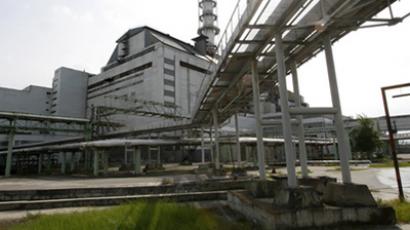Blast at Fukushima compounds fears of Japanese nuclear disaster

Fears of a nuclear meltdown intensified in Japan after an explosion at Fukushima power plant, which was damaged by Friday’s earthquake in the northeast.
Emergency crews and engineers are desperately working at the Fukushima nuclear plant in the tsunami-hit north to prevent a possible meltdown after a powerful blast at the facility.Fifteen people are reported to have been exposed to radioactivity near the facility.News agencies also say Japan's nuclear safety body has reported an emergency at a second reactor at Fukushima.Japan’s Emergencies Ministry has ordered the evacuation zone to be expanded to 20km (12 miles) from the Fukushima plant.Four workers are reported to have been injured in the blast, which also caused the collapse of four of the building’s walls. Officials claim the explosion at the plant was caused by a failure in the pumping facility that had been used for cooling purposes, not in the reactor itself. The authorities have been able to release some of the pressure inside the reactor, because it is still very high. The needed to release steam to release pressure, and they managed to do that without affecting the radiation. At the moment radiation levels are said to be decreasing.Japan’s nuclear safety watchdog has dismissed fears that the reactor may have melted, saying the actual structure of the reactor remains intact.
Additionally, there are fears a leak could occur at another reactor – one of five which have been shut down in the country.The cooling system failed in three reactors at the quake-hit Fukushima No.2 nuclear power plant Saturday, the operator, Tokyo Electric Power Co., said.Fukushima is located just 160km (100 miles) north of Tokyo.Several other nuclear power plants have also been shut down.At the moment the authorities are distributing iodine to people in the area around the station, as it is used to prevent cancer caused by radiation.People living in the area are being asked to cover their mouths, noses and any exposed areas of skin while outside, and as they get inside they should wash and scrub their skin thoroughly and avoid drinking tap water, as there are fears it is also contaminated.The possibility of radiation emission in Fukushima would put in danger not only Japan, but the whole Russian Far East, large areas of China and the Korean peninsula. In Russia’s Sakhalin Region, which is most closely located to Japan, a state of emergency has already been declared, but what effect a possible nuclear meltdown at Fukushima could have on the area is still unclear.
The explosion has been the result of the earthquake and tsunami that hit Japan on Friday morning. So far, more than 900 people are believed to be dead, and more than 10,000 missing.In the last 24 hours there have been over 100 aftershocks of the quake, one of the most powerful happening on Saturday afternoon near the east coast of Honshu, not far from the Fukushima region.
Kate Hudson, head of the Campaign for Nuclear Disarmament in London, says building nuclear plants on the shore line, like Japan or Britain do, because of the need for water passing through the station for cooling purposes, may lead to a very dangerous situation in case of a natural disaster like tsunami or a rising water level. “That situation in Japan, as I understand from nuclear activists there, is actually extremely dangerous. If they cannot cool the radioactive core of that reactor, then you run the risk of a meltdown, and then you run the risk of fire, massive radioactive release and a situation like Chernobyl or worse,” says Hudson.
Valery Petrosyan, a UN expert on chemical safety, has joined the chorus of voices admitting there is real cause for concern about what is happening at the Japanese plant.“The problem is very serious because we are talking about the possible destruction of chemical plants and nuclear power stations,” Valery Petrosyan said. “As for the chemical plant, evidently we are having in mind the possible contamination of both air and land with toxic chemicals. And as for the nuclear power stations, I have to say that the Japanese nation has become very sensitive to the problem of radioactive pollution after 1945, when two first American nuclear bombs were exploded over Hiroshima and Nagasaki.”
However, Dr Richard Philips from the School of Earth and Environment at Britain's University of Leeds, says Japanese nuclear facilities are very well prepared for any natural disasters and the catastrophe is unlikely to happen. “They are very well prepared for earthquakes in terms of their nuclear facilities, and this is one of their core energy supplies.Their buildings are incredibly robust, they have done many tests, gone through lots of scenarios similar to what they are experiencing now. I‘ll be surprised if we do see any serious leakage from the Fukushima plant,” said Philips.












